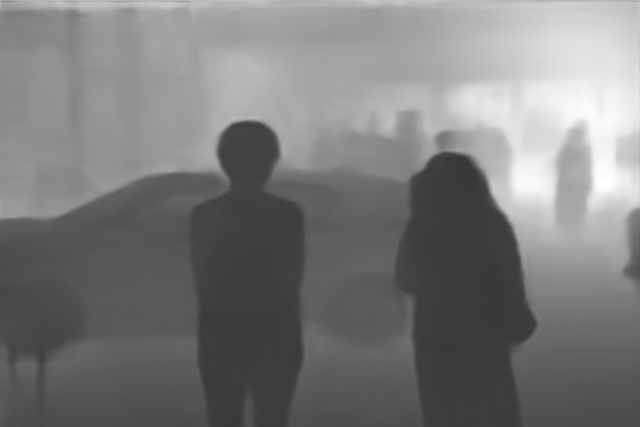* Fixed typo: insted to instead * Fixed typo: relase to release * Fixed typo: nighlty to nightly * Fixed typos: versatible, benchamarks, becnhmark to versatile, benchmark, benchmarks * Fixed typo in comment: quantizd to quantized * Fixed typo: architecutre to architecture * Fixed typo: contibution to contribution * Fixed typo: Presequities to Prerequisites * Fixed typo: faste to faster * Fixed typo: extendeding to extending * Fixed typo: segmetantion_maps to segmentation_maps * Fixed typo: Alternativelly to Alternatively * Fixed incorrectly defined variable: output to output_disabled * Fixed typo in library name: tranformers.onnx to transformers.onnx * Fixed missing import: import tensorflow as tf * Fixed incorrectly defined variable: token_tensor to tokens_tensor * Fixed missing import: import torch * Fixed incorrectly defined variable and typo: uromaize to uromanize * Fixed incorrectly defined variable and typo: uromaize to uromanize * Fixed typo in function args: numpy.ndarry to numpy.ndarray * Fixed Inconsistent Library Name: Torchscript to TorchScript * Fixed Inconsistent Class Name: OneformerProcessor to OneFormerProcessor * Fixed Inconsistent Class Named Typo: TFLNetForMultipleChoice to TFXLNetForMultipleChoice * Fixed Inconsistent Library Name Typo: Pytorch to PyTorch * Fixed Inconsistent Function Name Typo: captureWarning to captureWarnings * Fixed Inconsistent Library Name Typo: Pytorch to PyTorch * Fixed Inconsistent Class Name Typo: TrainingArgument to TrainingArguments * Fixed Inconsistent Model Name Typo: Swin2R to Swin2SR * Fixed Inconsistent Model Name Typo: EART to BERT * Fixed Inconsistent Library Name Typo: TensorFLow to TensorFlow * Fixed Broken Link for Speech Emotion Classification with Wav2Vec2 * Fixed minor missing word Typo * Fixed minor missing word Typo * Fixed minor missing word Typo * Fixed minor missing word Typo * Fixed minor missing word Typo * Fixed minor missing word Typo * Fixed minor missing word Typo * Fixed minor missing word Typo * Fixed Punctuation: Two commas * Fixed Punctuation: No Space between XLM-R and is * Fixed Punctuation: No Space between [~accelerate.Accelerator.backward] and method * Added backticks to display model.fit() in codeblock * Added backticks to display openai-community/gpt2 in codeblock * Fixed Minor Typo: will to with * Fixed Minor Typo: is to are * Fixed Minor Typo: in to on * Fixed Minor Typo: inhibits to exhibits * Fixed Minor Typo: they need to it needs * Fixed Minor Typo: cast the load the checkpoints To load the checkpoints * Fixed Inconsistent Class Name Typo: TFCamembertForCasualLM to TFCamembertForCausalLM * Fixed typo in attribute name: outputs.last_hidden_states to outputs.last_hidden_state * Added missing verbosity level: fatal * Fixed Minor Typo: take To takes * Fixed Minor Typo: heuristic To heuristics * Fixed Minor Typo: setting To settings * Fixed Minor Typo: Content To Contents * Fixed Minor Typo: millions To million * Fixed Minor Typo: difference To differences * Fixed Minor Typo: while extract To which extracts * Fixed Minor Typo: Hereby To Here * Fixed Minor Typo: addition To additional * Fixed Minor Typo: supports To supported * Fixed Minor Typo: so that benchmark results TO as a consequence, benchmark * Fixed Minor Typo: a To an * Fixed Minor Typo: a To an * Fixed Minor Typo: Chain-of-though To Chain-of-thought
9.2 KiB
Monocular depth estimation
Monocular depth estimation is a computer vision task that involves predicting the depth information of a scene from a single image. In other words, it is the process of estimating the distance of objects in a scene from a single camera viewpoint.
Monocular depth estimation has various applications, including 3D reconstruction, augmented reality, autonomous driving, and robotics. It is a challenging task as it requires the model to understand the complex relationships between objects in the scene and the corresponding depth information, which can be affected by factors such as lighting conditions, occlusion, and texture.
There are two main depth estimation categories:
-
Absolute depth estimation: This task variant aims to provide exact depth measurements from the camera. The term is used interchangeably with metric depth estimation, where depth is provided in precise measurements in meters or feet. Absolute depth estimation models output depth maps with numerical values that represent real-world distances.
-
Relative depth estimation: Relative depth estimation aims to predict the depth order of objects or points in a scene without providing the precise measurements. These models output a depth map that indicates which parts of the scene are closer or farther relative to each other without the actual distances to A and B.
In this guide, we will see how to infer with Depth Anything V2, a state-of-the-art zero-shot relative depth estimation model, and ZoeDepth, an absolute depth estimation model.
Check the Depth Estimation task page to view all compatible architectures and checkpoints.
Before we begin, we need to install the latest version of Transformers:
pip install -q -U transformers
Depth estimation pipeline
The simplest way to try out inference with a model supporting depth estimation is to use the corresponding [pipeline].
Instantiate a pipeline from a checkpoint on the Hugging Face Hub:
>>> from transformers import pipeline
>>> import torch
>>> device = "cuda" if torch.cuda.is_available() else "cpu"
>>> checkpoint = "depth-anything/Depth-Anything-V2-base-hf"
>>> pipe = pipeline("depth-estimation", model=checkpoint, device=device)
Next, choose an image to analyze:
>>> from PIL import Image
>>> import requests
>>> url = "https://huggingface.co/datasets/huggingface/documentation-images/resolve/main/bee.jpg"
>>> image = Image.open(requests.get(url, stream=True).raw)
>>> image

Pass the image to the pipeline.
>>> predictions = pipe(image)
The pipeline returns a dictionary with two entries. The first one, called predicted_depth, is a tensor with the values
being the depth expressed in meters for each pixel.
The second one, depth, is a PIL image that visualizes the depth estimation result.
Let's take a look at the visualized result:
>>> predictions["depth"]

Depth estimation inference by hand
Now that you've seen how to use the depth estimation pipeline, let's see how we can replicate the same result by hand.
Start by loading the model and associated processor from a checkpoint on the Hugging Face Hub. Here we'll use the same checkpoint as before:
>>> from transformers import AutoImageProcessor, AutoModelForDepthEstimation
>>> checkpoint = "Intel/zoedepth-nyu-kitti"
>>> image_processor = AutoImageProcessor.from_pretrained(checkpoint)
>>> model = AutoModelForDepthEstimation.from_pretrained(checkpoint).to(device)
Prepare the image input for the model using the image_processor that will take care of the necessary image transformations
such as resizing and normalization:
>>> pixel_values = image_processor(image, return_tensors="pt").pixel_values.to(device)
Pass the prepared inputs through the model:
>>> import torch
>>> with torch.no_grad():
... outputs = model(pixel_values)
Let's post-process and visualize the results.
We need to pad and then resize the outputs so that predicted depth map has the same dimension as the original image. After resizing we will remove the padded regions from the depth.
>>> import numpy as np
>>> import torch.nn.functional as F
>>> predicted_depth = outputs.predicted_depth.unsqueeze(dim=1)
>>> height, width = pixel_values.shape[2:]
>>> height_padding_factor = width_padding_factor = 3
>>> pad_h = int(np.sqrt(height/2) * height_padding_factor)
>>> pad_w = int(np.sqrt(width/2) * width_padding_factor)
>>> if predicted_depth.shape[-2:] != pixel_values.shape[-2:]:
>>> predicted_depth = F.interpolate(predicted_depth, size= (height, width), mode='bicubic', align_corners=False)
>>> if pad_h > 0:
predicted_depth = predicted_depth[:, :, pad_h:-pad_h,:]
>>> if pad_w > 0:
predicted_depth = predicted_depth[:, :, :, pad_w:-pad_w]
We can now visualize the results (the function below is taken from the GaussianObject framework).
import matplotlib
def colorize(value, vmin=None, vmax=None, cmap='gray_r', invalid_val=-99, invalid_mask=None, background_color=(128, 128, 128, 255), gamma_corrected=False, value_transform=None):
"""Converts a depth map to a color image.
Args:
value (torch.Tensor, numpy.ndarray): Input depth map. Shape: (H, W) or (1, H, W) or (1, 1, H, W). All singular dimensions are squeezed
vmin (float, optional): vmin-valued entries are mapped to start color of cmap. If None, value.min() is used. Defaults to None.
vmax (float, optional): vmax-valued entries are mapped to end color of cmap. If None, value.max() is used. Defaults to None.
cmap (str, optional): matplotlib colormap to use. Defaults to 'magma_r'.
invalid_val (int, optional): Specifies value of invalid pixels that should be colored as 'background_color'. Defaults to -99.
invalid_mask (numpy.ndarray, optional): Boolean mask for invalid regions. Defaults to None.
background_color (tuple[int], optional): 4-tuple RGB color to give to invalid pixels. Defaults to (128, 128, 128, 255).
gamma_corrected (bool, optional): Apply gamma correction to colored image. Defaults to False.
value_transform (Callable, optional): Apply transform function to valid pixels before coloring. Defaults to None.
Returns:
numpy.ndarray, dtype - uint8: Colored depth map. Shape: (H, W, 4)
"""
if isinstance(value, torch.Tensor):
value = value.detach().cpu().numpy()
value = value.squeeze()
if invalid_mask is None:
invalid_mask = value == invalid_val
mask = np.logical_not(invalid_mask)
# normalize
vmin = np.percentile(value[mask],2) if vmin is None else vmin
vmax = np.percentile(value[mask],85) if vmax is None else vmax
if vmin != vmax:
value = (value - vmin) / (vmax - vmin) # vmin..vmax
else:
# Avoid 0-division
value = value * 0.
# squeeze last dim if it exists
# grey out the invalid values
value[invalid_mask] = np.nan
cmapper = matplotlib.colormaps.get_cmap(cmap)
if value_transform:
value = value_transform(value)
# value = value / value.max()
value = cmapper(value, bytes=True) # (nxmx4)
# img = value[:, :, :]
img = value[...]
img[invalid_mask] = background_color
# return img.transpose((2, 0, 1))
if gamma_corrected:
# gamma correction
img = img / 255
img = np.power(img, 2.2)
img = img * 255
img = img.astype(np.uint8)
return img
>>> result = colorize(predicted_depth.cpu().squeeze().numpy())
>>> Image.fromarray(result)
